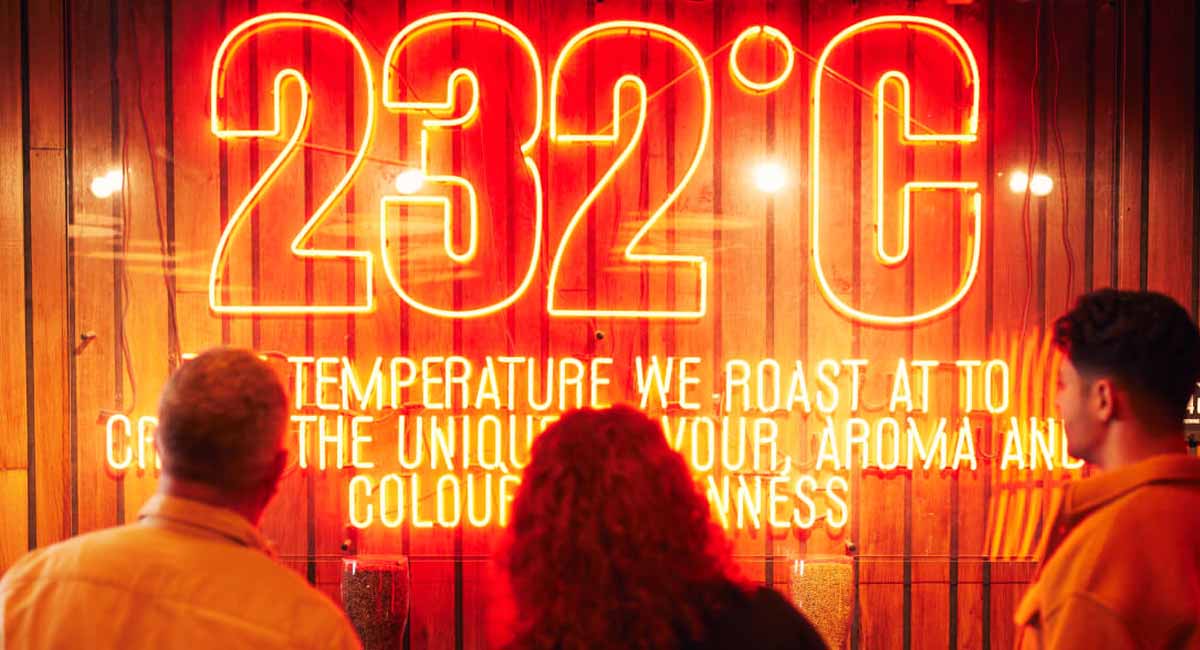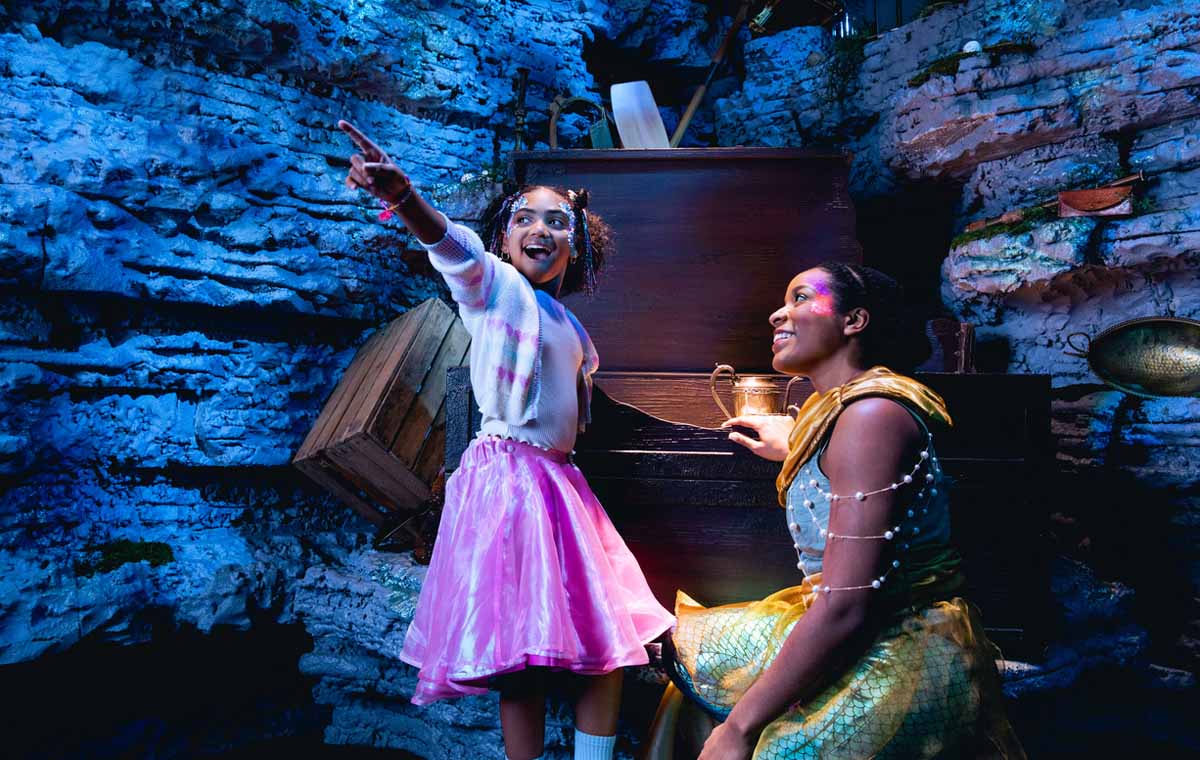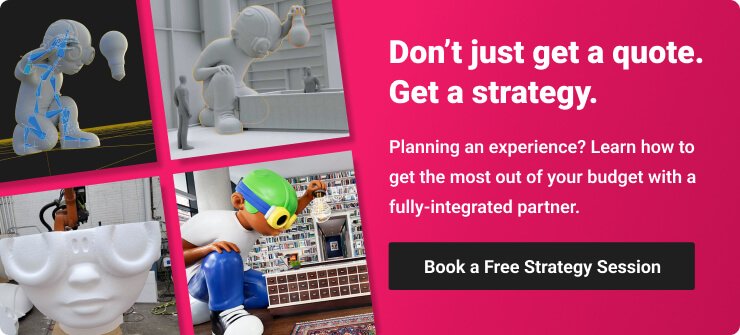As digital channels continue to compete for consumer attention, top brands are returning to one of the oldest (and most fun) forms of audience engagement: themed environments. By offering unique, in-person experiences, themed environments have long been a successful vehicle for fostering meaningful connections between brands and their customers. How? Whether through experiential events, product launches, interactive retail spaces, or even corporate interiors – themed environments help brands stand out from the competition in a way that can be physically experienced. With inventive design techniques, modern materials, and cutting-edge technology, brands can leverage themed environments to create immersive experiences that are sure to engage and delight their customers.
In this article, you’ll see why top brands are embracing the fact that themed environments aren’t just for kids or amusement parks. We’ll discuss the benefits and best practices of incorporating themed environments into your experiential marketing efforts whether through retail store design, event activations, or location-based entertainment venues.
What is a Themed Environment?
A themed environment is a physical space designed to tap into the imagination and transport audiences to another time and place. It relies on an overarching theme, conveyed through custom-fabricated elements, design, media, and narratives, to create an alternate reality that captivates and engages the senses. Examples of themed environments range from the magical worlds of CAMP Stores to branded holiday activations, to retail spaces like the colorful M&M's World stores, to the futuristic atmosphere of Tesla showrooms.
How Can Brands Benefit from Themed Environments?
Creating themed environments offers brands a number of benefits, the first of which is differentiation. In a market saturated with similar products, a well-executed themed environment can make a brand stand out, providing a unique value proposition that can't be matched by competitors.
Immersion in a brand's story and values is another crucial advantage. By creating a physical space that reflects the brand's identity, customers can gain a deeper understanding of its ethos and mission. This immersive experience often results in stronger, more memorable connections with the audience, as they're not merely purchasing a product; they're buying into the brand's narrative.
The effect of themed environments isn't just external; it also energizes and engages employees. A stimulating, creatively designed workplace can boost morale and productivity, fostering a more positive and cohesive work culture.
From a marketing perspective, themed environments often generate significant earned media exposure. Photos and experiences shared on social media can rapidly spread, increasing brand visibility and attracting new audiences. Moreover, these spaces can open avenues for brand collaborations, creating opportunities for symbiotic relationships that can further enhance brand perception and reach.
What are the Best Practices for Creating Themed Environments?
When it comes to creating an impactful themed environment, there are a few key best practices to consider:
1. Start with a Story
Crafting a compelling narrative is the cornerstone of any successful themed environment. The story should not only captivate the audience but also resonate with your brand's core values and mission. This narrative will guide the design and aesthetic choices, creating a cohesive and immersive brand experience.
2. Know your Audience
Understanding your target audience's interests, preferences, and values is critical to creating a themed environment that resonates with them. The design should be tailored to engage your audience effectively, making them feel understood and valued.
3. Make it Relevant and Authentic
The themed environment should reflect the essence of your brand or product. Avoid creating a fantastical environment that has no connection to what you offer. Authenticity will make the experience more meaningful to your audience and strengthen their connection to your brand.
4. Don’t Make it Too Complicated
While it's essential to create a captivating and immersive environment, it's equally important to keep it user-friendly. Over-complicating the design can confuse and overwhelm your visitors, detracting from the experience. The environment should be intuitive and easy to navigate.
5. Work with an Experienced Partner
Creating a themed environment is a complex task that requires a specific set of skills and expertise. Partnering with a seasoned experiential design and fabrication studio can ensure your environment is designed and executed to the highest standards, creating a memorable experience that drives your brand forward. The right partner will understand how to bridge your marketing goals with your vision for the experience and be able to advise on the best strategy, materials, and production options to make your dream a reality.

What’s a Great Example? Check out the Themed Environment Guinness Created in Dublin
One notable example of a brand successfully utilizing a themed environment is the Guinness Storehouse in Dublin, Ireland. This global beer brand has transformed a seven-story former fermentation plant into an experiential journey, immersing visitors in the brand's rich history, production process, and cultural significance. From the moment guests step into the building, they are transported into the world of Guinness. Each floor offers a different experience, from interactive exhibits about the brewing process to a tasting room where guests are taught to pour the perfect pint. The journey culminates at the Gravity Bar, offering panoramic views of Dublin, making the experience unforgettable. This themed environment not only educates visitors about Guinness but also fosters a deep emotional connection with the brand, showcasing the power and effectiveness of a well-executed themed environment in experiential marketing.
Ready to Create Your Themed Environment?
Themed environments have been used successfully for years by amusement parks around the world to create superior customer experiences. But it's time for organizations everywhere to take a closer look at these immersive environments – they can be far more effective than traditional marketing efforts in engaging customers and building employee engagement and morale.
Not only are these experiential spaces highly innovative and aesthetically pleasing, but when done right – tailored precisely to an organization’s needs – they open up countless opportunities to drive interactions with current and potential customers, offer a level of connection not achievable through ordinary media channels, and foster meaningful relationships between a brand and its audience.
At Bridgewater Studio, storytelling is at the heart of everything we do. Whether designing a new retail interior, engineering a sophisticated science exhibit, or strategizing with a corporate brand about a new office space or event activation – our primary goal is to bring the story to life in an immersive, multi-sensory way. With roots in scenic design and themed entertainment, we understand that by successfully engaging audiences in person, companies can create lasting connections. Learn more by scheduling an introduction to Bridgewater today.


.png)
.png)
.png)







